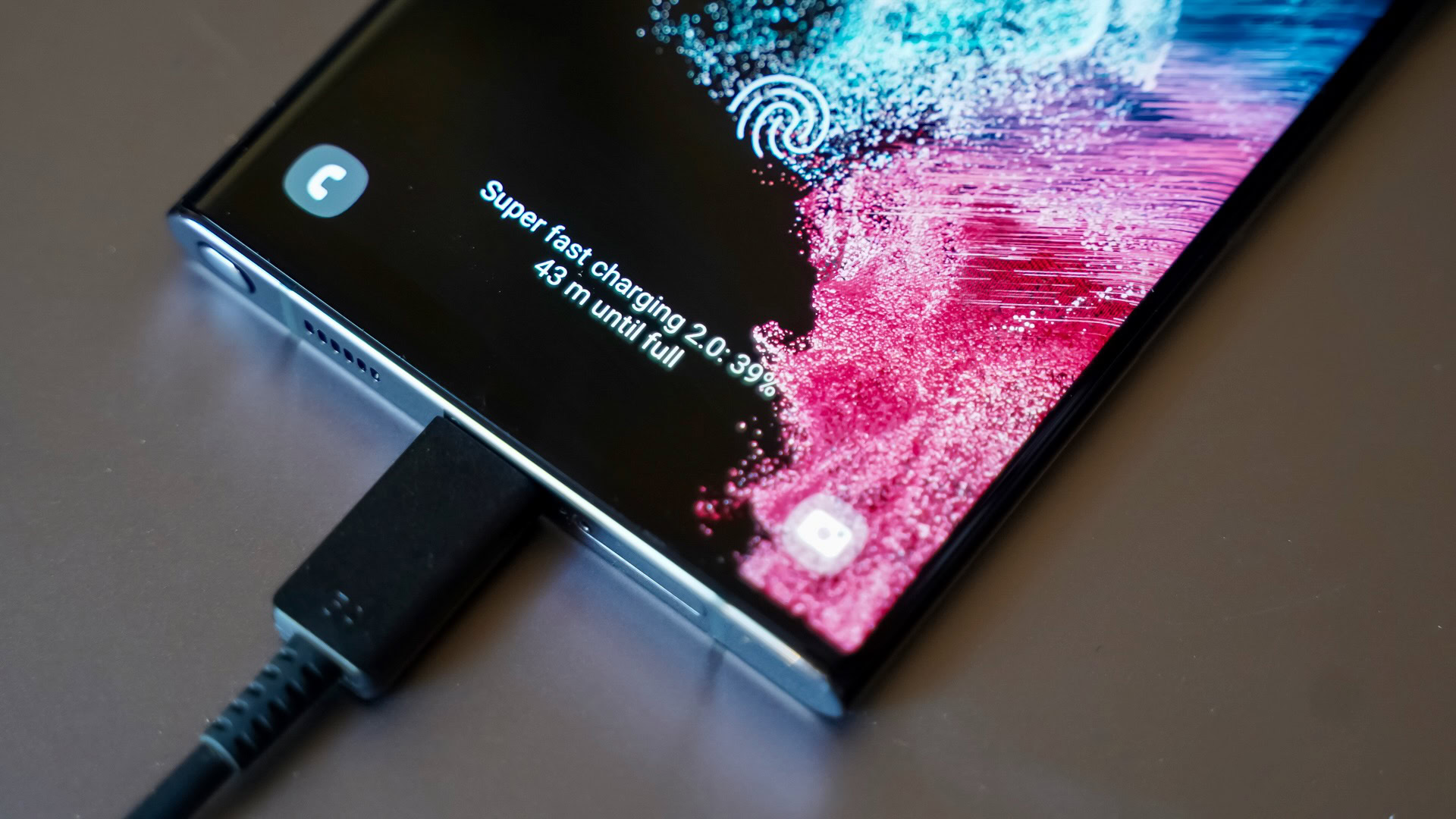Affiliate links on Android Authority may earn us a commission. Learn more.
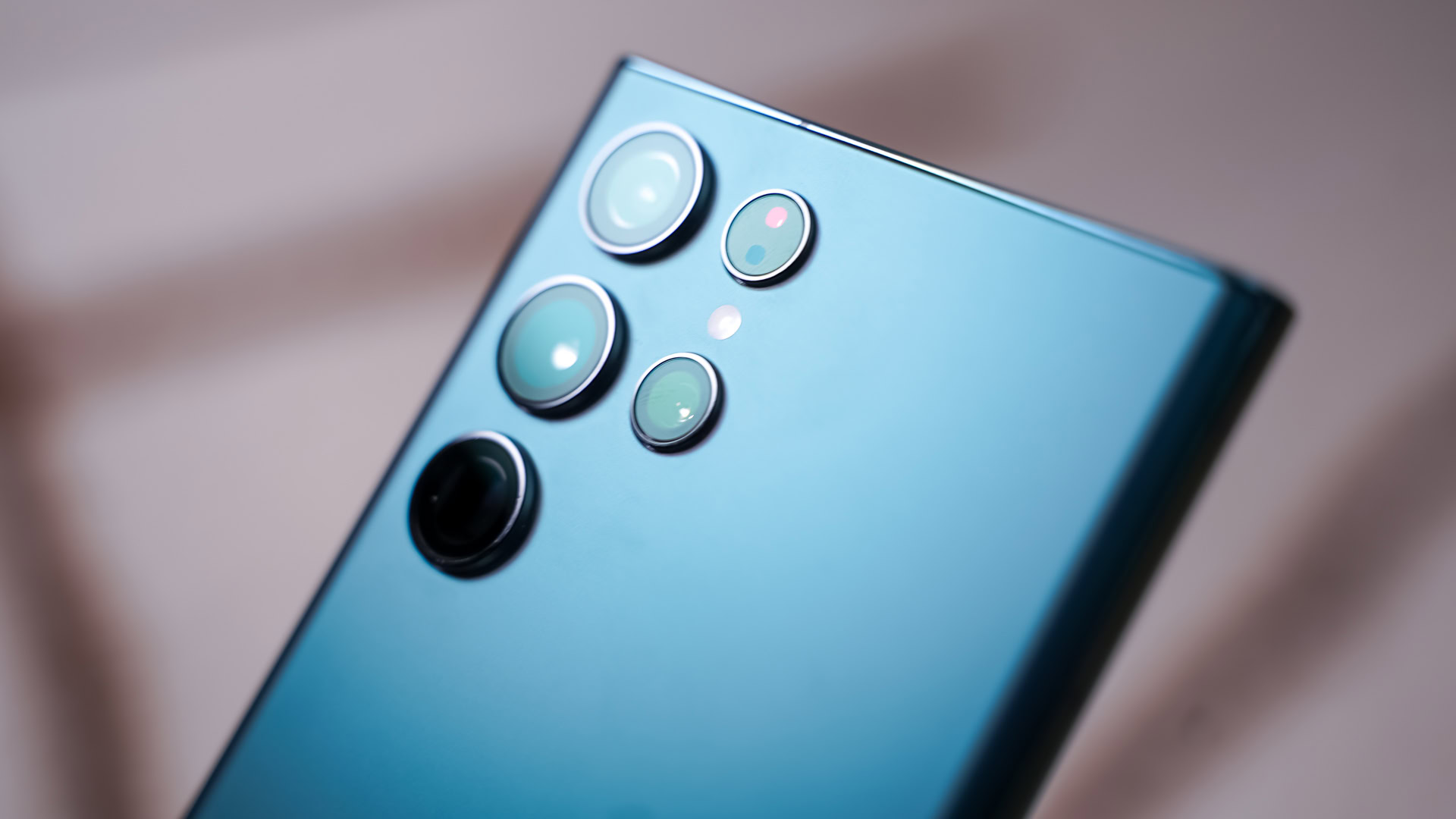

Samsung Galaxy S22 Ultra review: The power user's best friend
Published onJune 19, 2023

Samsung Galaxy S22 Ultra
MSRP:
What we like
What we don't like
Our scores

Samsung Galaxy S22 Ultra
Samsung is making a big bet on the Galaxy S22 Ultra: That it can appease two customer segments with one phone. The device merges the design, features, and core attributes of the Galaxy Note Ultra line with the Galaxy S Ultra line in the hope of wooing those seeking the absolute best of the best in terms of productivity, power, and photography.
Can Samsung possibly succeed in pursuing such a Herculean task considering the storied histories of both the Note and S series, both of which stretch back close to a decade? Find out in the Android Authority Samsung Galaxy S22 Ultra review.
Update, June 2023: We’ve updated this review to include the latest alternatives and software information.
What you need to know about the Samsung Galaxy S22 Ultra
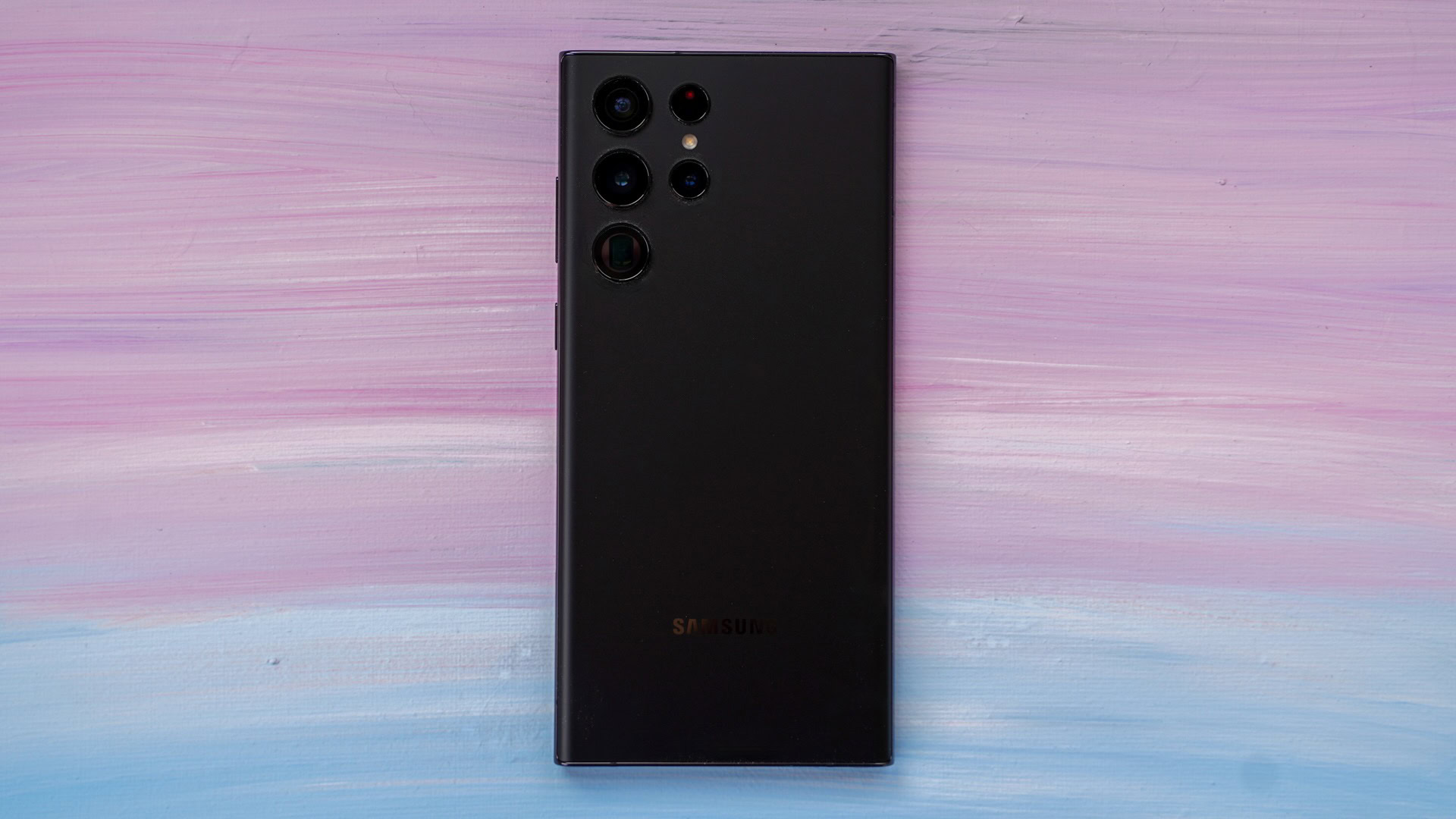
- Samsung Galaxy S22 Ultra (8GB/128GB): $1,199 / £1,149 / €1,259 / CA$1,649.99
- Samsung Galaxy S22 Ultra (12GB/256GB): $1,299 / £1,249 / €1,359 / CA$1,789.99 / Rs. 109,999
- Samsung Galaxy S22 Ultra (12GB/512GB): $1,399 / £1,329 / €1,459 / CA$1,929.99 / Rs. 118,999
- Samsung Galaxy S22 Ultra (12GB/1TB): $1,599 / £1,499 / €1,659 / CA$2,209.99 /Rs. 134,999
The Samsung Galaxy S22 Ultra is one of the most premium devices Samsung has ever manufactured. The phone may not have quite the raw “wow” factor of the flexible Galaxy Z Fold 4, but make no mistake: it is Samsung’s absolute top device.
The Galaxy S22 Ultra takes the basic sales pitch of the Note 20 Ultra (big-screened productivity monster) and blends it to some degree with that of the Galaxy S21 Ultra (high-tech camera beast). In other words, it’s a stylus-enabled smartphone that boasts the best specs and offers the highest degree of functionality possible in a single piece of hardware. It was the top dog in the Android ecosystem at launch and sits above the Galaxy S22 Plus and Galaxy S22 in Samsung’s 2022 Galaxy S series lineup.
Samsung is clearly looking to outgun Apple with the Galaxy S22 Ultra, while still maintaining a lead over Google, OnePlus, and other Android contenders. The phone has more features, more cameras, and more software to put to use than many competing phones. This definitely gives the device some advantages despite the familiar form factor.
Samsung is clearly hoping the Galaxy S22 Ultra can outgun the best from Apple.
There are 28 color and RAM/storage combinations available for the Galaxy S22 Ultra. In other words, most people should be able to find a version that fits them. It comes in Phantom Black, Phantom White, Burgundy, and Green, with Graphite, Sky Blue, and Red available as online-only options exclusive to Samsung’s own store. You can spend as little as $1,199 on the 8GB/128GB model or as much as $1,599 on the 12GB/1TB model — if you pay full price.
The generous pre-order offers from Samsung have gone away, but there are still ways to save money when you buy the phone. Samsung and its carrier partners continue to offer solid trade-in deals if you submit your old phone. It’s not clear how long these trade-in deals will be available, so it’s best to act quickly if you’re hankering for a hunk of burnin’ Galaxy S22 Ultra love for less than full price.
In addition to the trade-in deals, Samsung and a few other retailers also offer various freebies to those who buy the phone. If you get it via Samsung’s website, for example, you’ll also get four months of YouTube Premium for free, a 100GB of OneDrive cloud storage for six months, and a $150 gift certificate you can use on accessories sold by Samsung. Check with your retailer/carrier of choice to see what extra goodies it’s offering, if any.
Let’s find out if the S22 Ultra is worth the high cost.
Design: Recycled elegance
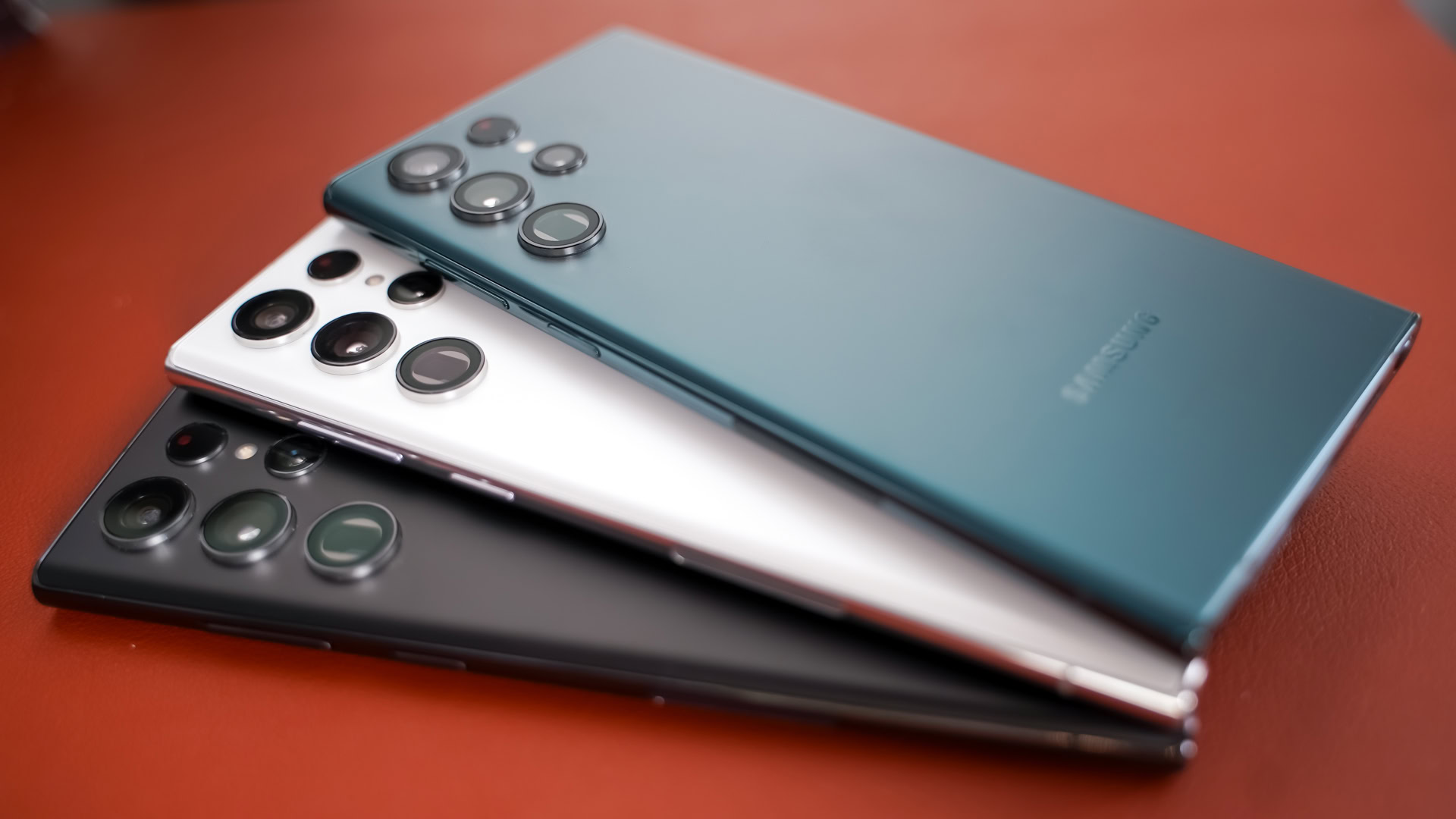
- Armor Aluminum, Gorilla Glass Victus Plus
- 163.3 x 77.9 x 8.9mm
- 229g
- In-display fingerprint reader
- IP68
- Stereo speakers
- S Pen stylus
- Phantom Black, Phantom White, Burgundy, Green (Graphite, Sky Blue, and Red — online only)
The Samsung Galaxy S22 Ultra may be a brand-new phone, but it’s hardly unique. The phone is quite literally a crossover of two older Samsung phones.
The Galaxy S22 Ultra borrows its basic shape from the Note 20 Ultra. In fact, it’s almost identical to the mid-2020 phone from Samsung. The most obvious visual difference between the two is the arrangement of the camera lenses on the rear, which is where the S22 Ultra takes its only visual queues from the S21 Ultra. While there’s nothing inherently wrong or outdated in these older designs, I wish Samsung had put more effort into making the Galaxy S22 Ultra a unique device that stood on its own strengths rather than those of its immediate predecessors. That’s not to say it isn’t a classy piece of hardware, though, because surely it is.
I could take or leave the four main colors Samsung opted for this year, though the matte finish they all share is nice. The black and white colorways are common options and the green and burgundy don’t really resonate or stand out to me, though you may feel differently. I personally preferred the shimmery, multi-toned finish to the Note 10 series. Sadly, we haven’t seen the additional online-only colors in person yet. Samsung painted the metal frame of the Galaxy S22 Ultra to match the Phantom Black review unit we have, though it has more of a glossy effect to it. Of course, many will choose to cover the phone up with protection anyway.
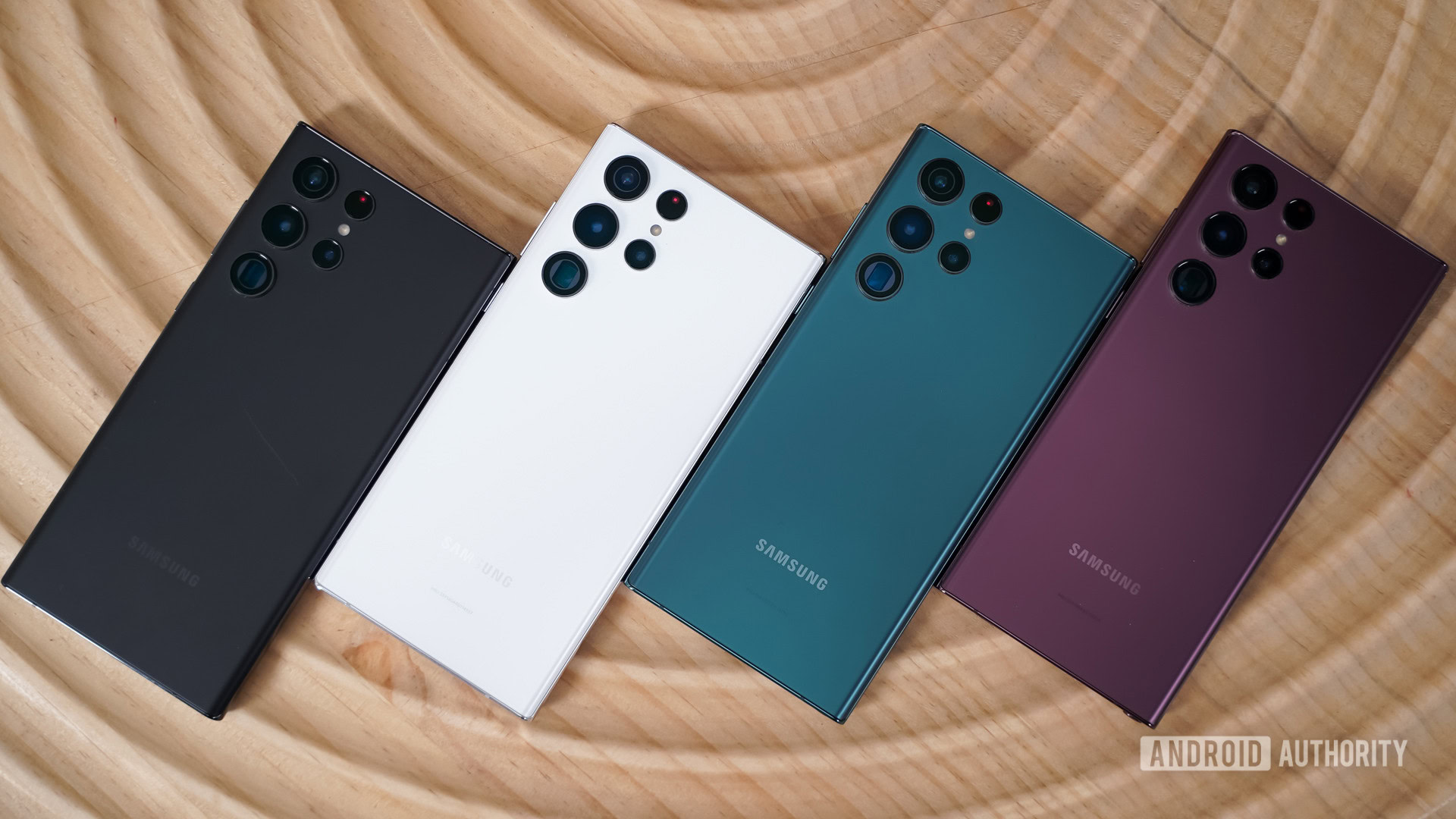
If there’s one design element I do appreciate about the Samsung Galaxy S22 Ultra, it’s the camera module — or, more correctly, the lack thereof. While the Galaxy S22 Ultra’s lens arrangement may be the same as the S21 Ultra’s, the raised module itself (you know, the typical camera “bump”) is gone. Samsung was one of the worst offenders in recent years with respect to the size of its camera bumps. The S22 Ultra all but eliminates the unsightly camera module, even if the raised circular lenses are still rather large.
You couldn't ask for better materials or stronger construction than what you get from the Galaxy S22 Ultra.
The Galaxy S22 Ultra is a gigantic metal-and-glass slab with sharp corners but gently rounded side edges. The glass has been upgraded to Gorilla Glass Victus Plus from Corning, and the metal frame has been strengthened to Armor Aluminum. Astute observers will note (pun intended) that the metal rails along the sides of the phone are thicker and more curved than those of the Note 20 Ultra. This gives the phone incredible rigidity and smoothes over the side edges so that they’re more comfortable to grip. You couldn’t ask for better materials or stronger construction. Samsung has assembled a phone of the highest quality in terms of parts and manufacture.
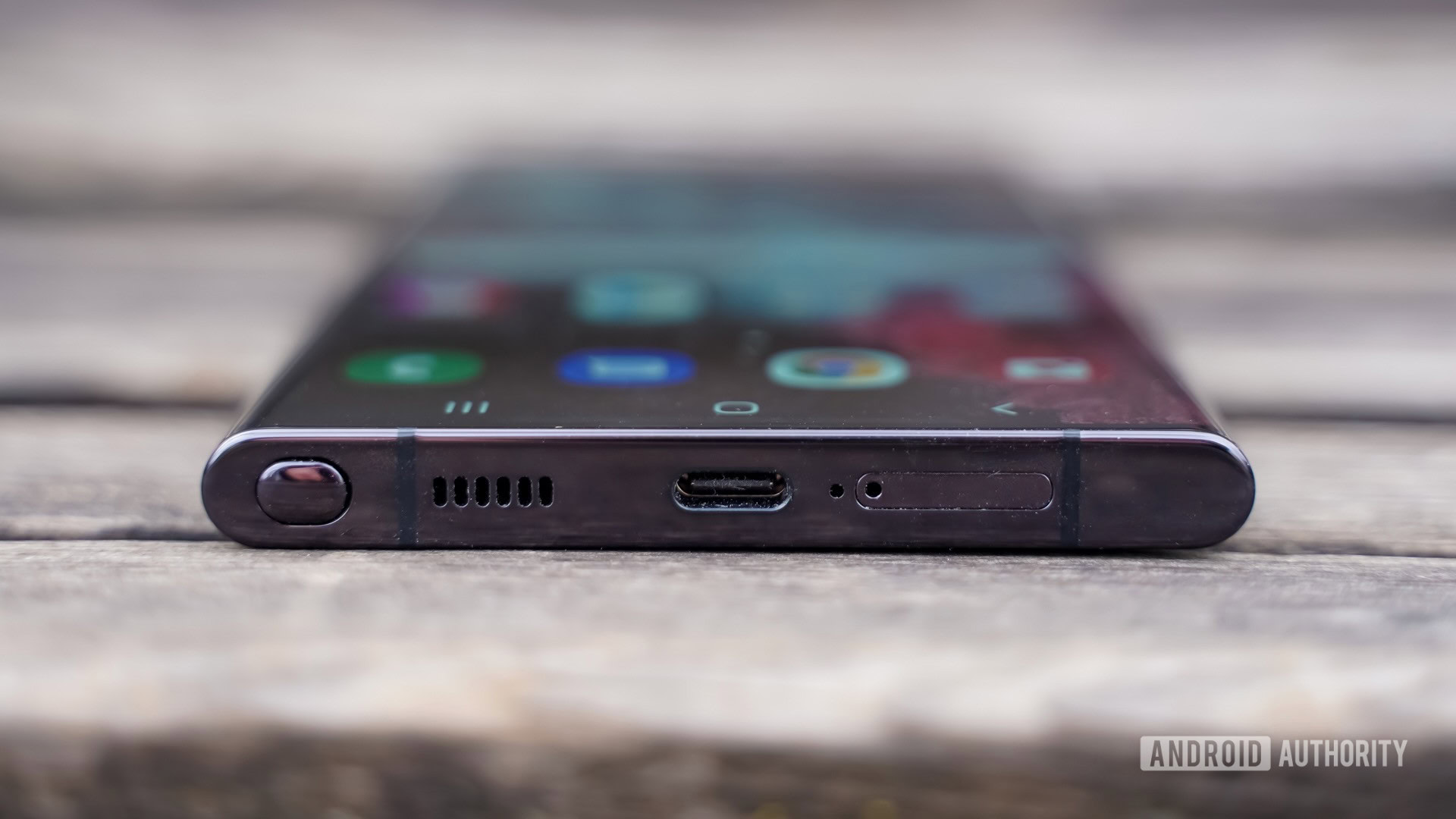
The S22 Ultra carries over the IP68 rating, which will allow it to sit in up to 1.5m of water for up to 30 minutes. This should save it from most accidental splashes or baths. I tested it by holding it under running water and the phone is still working perfectly.
The Note series has long been one of the largest smartphones in the market and that’s no different with the Galaxy S22 Ultra. It’s fractionally shorter than the Note 20 Ultra, but it’s wider, thicker, and heavier. Those accustomed to the size of the Note 20 Ultra or Galaxy S21 Ultra will have no trouble adjusting here. If you’re perhaps coming from one of the smaller Galaxy S20 or S21 models, the change in shape (mostly the pointy corners) will be the biggest pain point. It’s a two-handed phone for sure and putting a case on it only makes it bigger and bulkier.
Interacting with the phone via its various controls will come naturally to anyone who’s used a Samsung phone before. The power button is located just above center on the right edge. The button is a little bit small, but it delivers excellent action. The longer volume toggle is perched above the power button and also offers near-perfect feedback. Samsung moved the SIM card tray from the top of the Note 20 Ultra to the bottom edge of the Galaxy S22 Ultra, though, unlike the Note, it doesn’t support memory cards. I must point out that Samsung located a microphone hole directly next to the SIM card pinhole. This is seriously poor design. Be extra careful to use your SIM card tool in the correct spot, lest you risk damaging one of the microphones. The USB-C port, speaker grille, and S Pen garage mirror their placement on the bottom edge of the Note 20 Ultra.
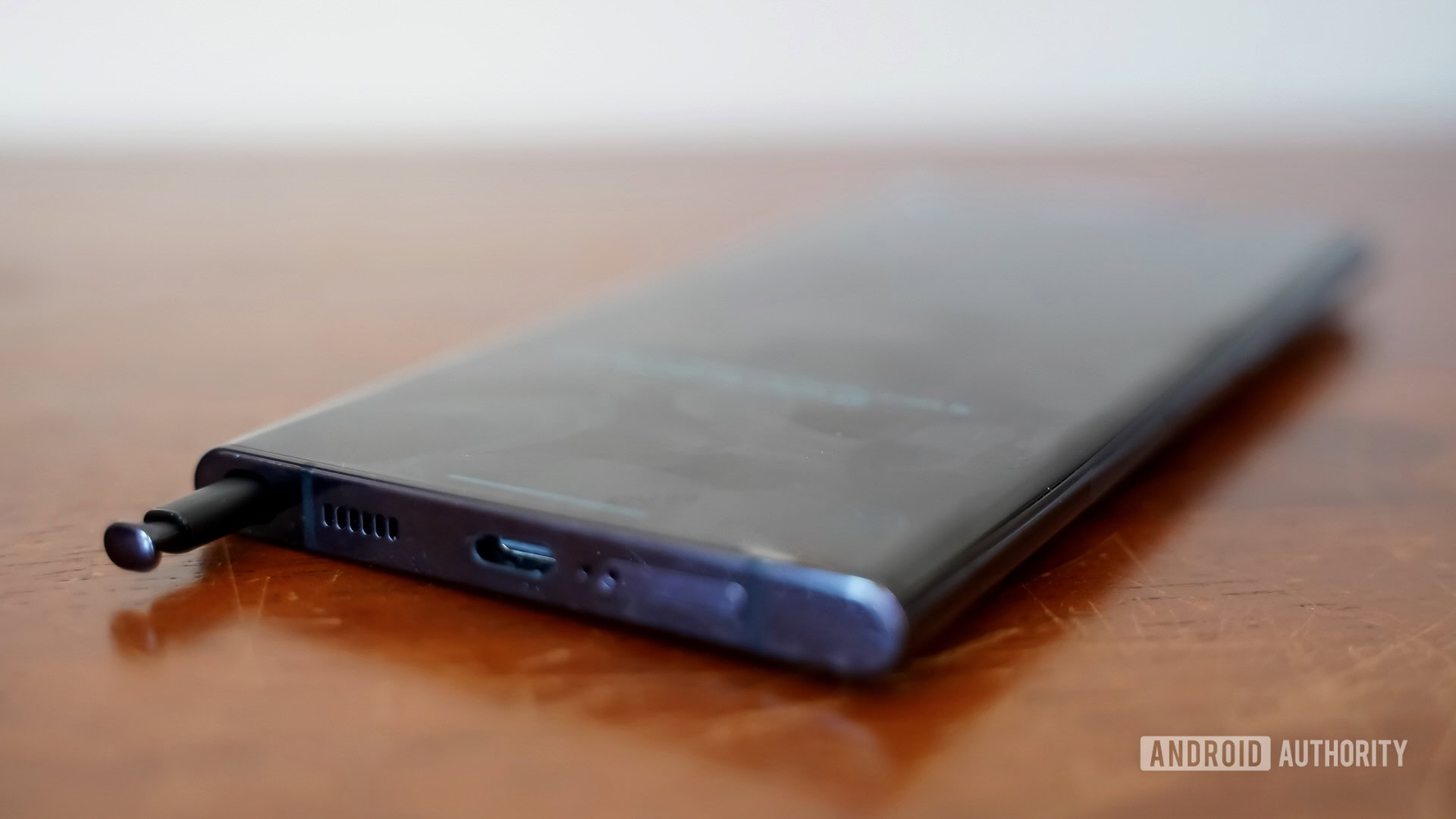
The new S Pen has a grippy coating on it that makes it easier to hold onto.
Retrieving the S Pen is no trouble at all. A quick press causes the end cap to pop out, allowing you to grab the stylus and slide it out. The S Pen this year has a bit of a grippy coating on it that makes it easier to hold onto without it sliding about. I appreciate that. It’s the same size and shape as the S Pen from the Note 20 Ultra, but it has been improved with quicker response time when writing on the screen. The stylus carries over the utility button, allowing you to do things such as snap the shutter when using the camera or page through a PowerPoint presentation. The S Pen is a bit short, in my opinion, but it works well and gives the S22 Ultra many of its productive powers.
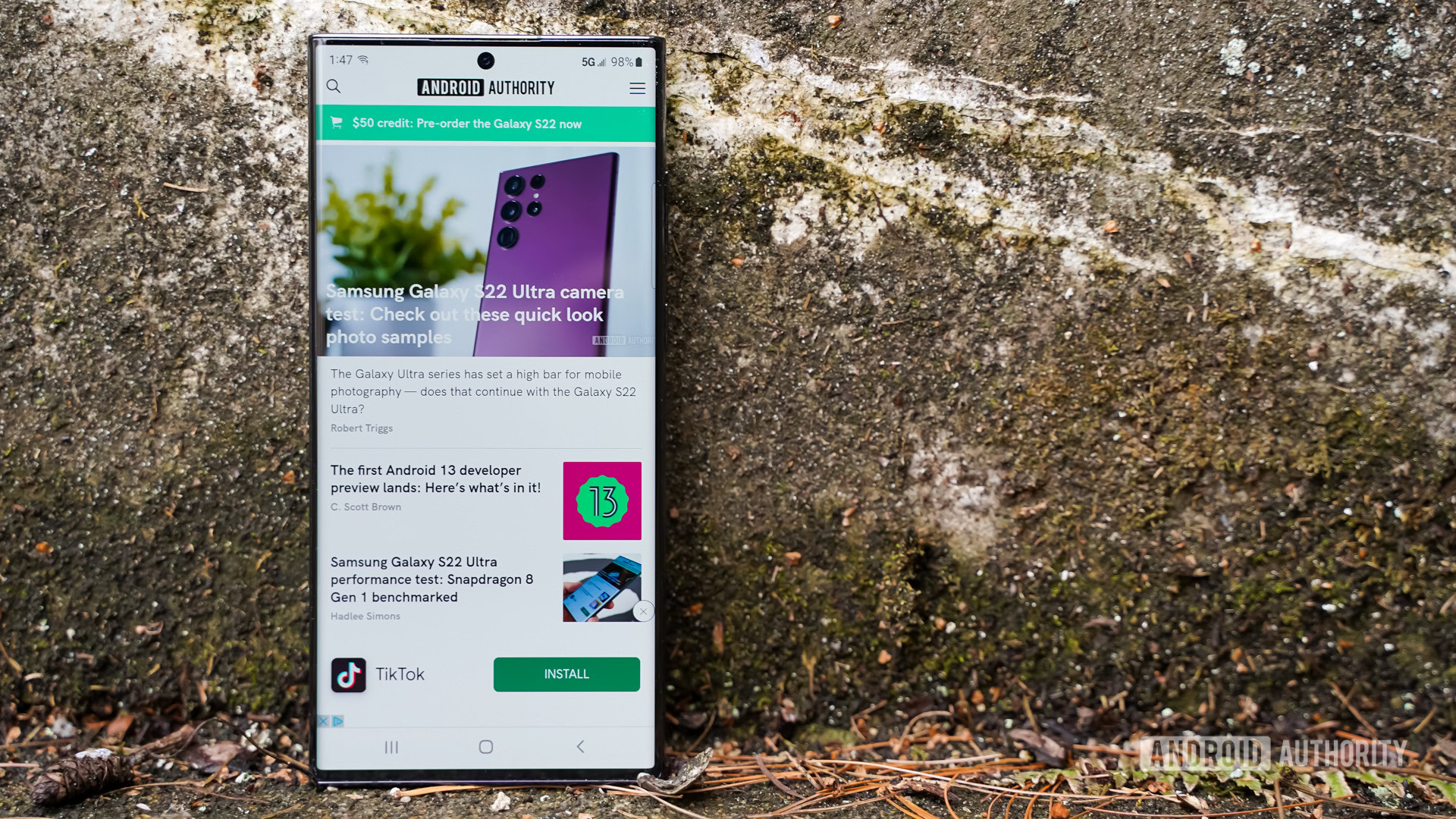
Like many flagships, the S22 Ultra features stereo audio formed by the combination of the earpiece and downward-firing speaker on the bottom edge. They’re on par with most other speakers on phones in this price range, but despite Samsung touting Dolby Atmos support, they didn’t wow me. Audio while gaming, playing music, and watching movies can hit respectably loud volumes with minimal distortion. The balance of sound, however, leaned heavily toward the mid-range and high-end, leaving lower tones notably absent from the mix. The speakers are capable of filling a household room with plenty of sound that at least comes across as clean. People who are more discerning about sound quality will surely be happier using headphones or a dedicated speaker for serious listening.
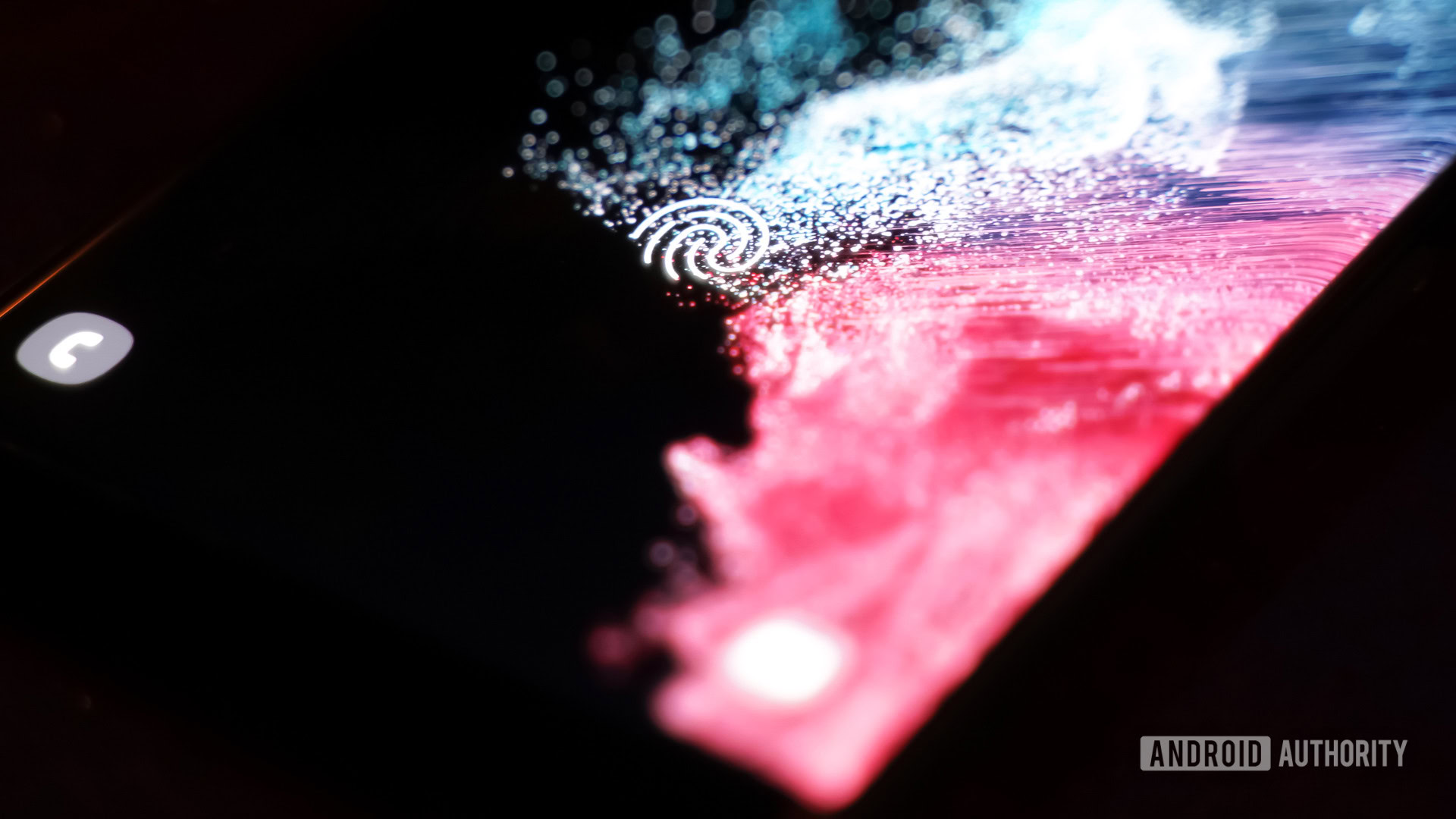
Last up, the fingerprint reader. The ultrasonic in-display reader of the Galaxy S22 Ultra is positioned just a tad high on the screen and is a fairly small target to hit with your thumb. Even so, it’s among the fastest and most accurate I’ve ever used. Training the reader is no different from others in this price tier.
In all, Samsung was able to retread its own blueprints without getting lost. The Galaxy S22 Ultra is a superbly crafted piece of hardware that will surely impress many of those who get to experience it.
Display: Class leader
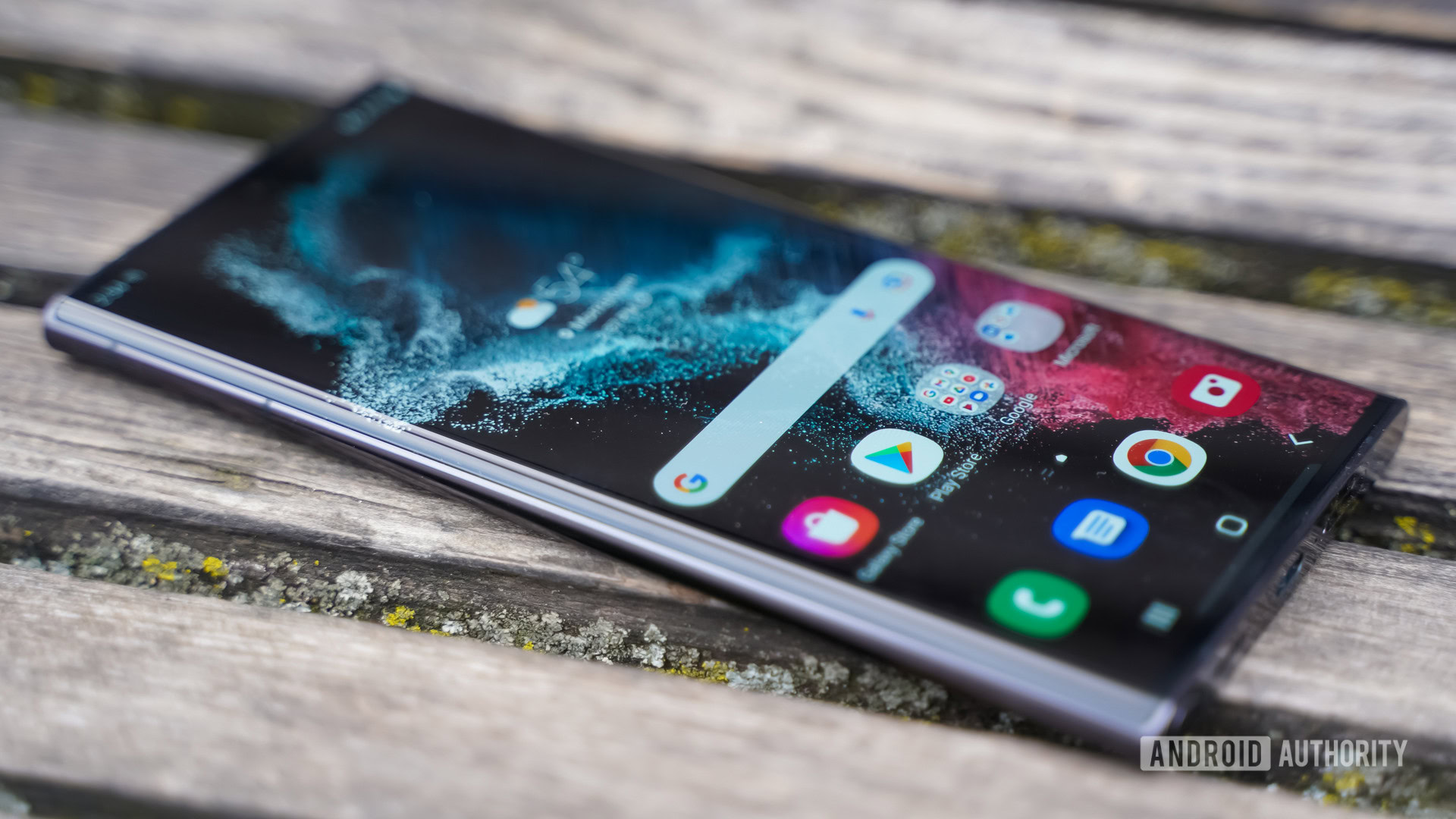
- 6.8-inches, Dynamic AMOLED 2x
- 3,088 x 1,440 resolution
- 501ppi
- 19.3:9 aspect ratio, 120Hz refresh rate
The Galaxy Note series often set the stage for the industry when it came to screen size and quality. Now, screens stretching to almost seven inches are commonplace and displays with QHD resolution and AMOLED lighting are the norm. In other words, Samsung has to work harder and harder each year to create a display that stands out from the crowd. Did it dial in the right mix for the S22 Ultra?
The phone’s screen is a touch smaller than the Note 20 Ultra’s at 6.8 inches, but it has the same resolution, the approximate same pixel density, and the same peak refresh rate. The Dynamic AMOLED 2x tech behind the screen is the real improvement, to be sure, aiding mostly in terms of contrast and brightness.
How does it all hold up? Well, it’s a dynamite screen. Out of the box, it’s set to FHD+ with the adaptive 120Hz refresh rate enabled. In this mode, it excels at everything. Your email and favorite websites look incredibly clean, your YouTube channels and social media stars are at their best, and high-quality movies are simply stunning. Changing the resolution to QHD+ or the refresh rate to a static 60Hz doesn’t produce much visual change that your eyes can see, except in certain circumstances, such as scrolling through menu screens.
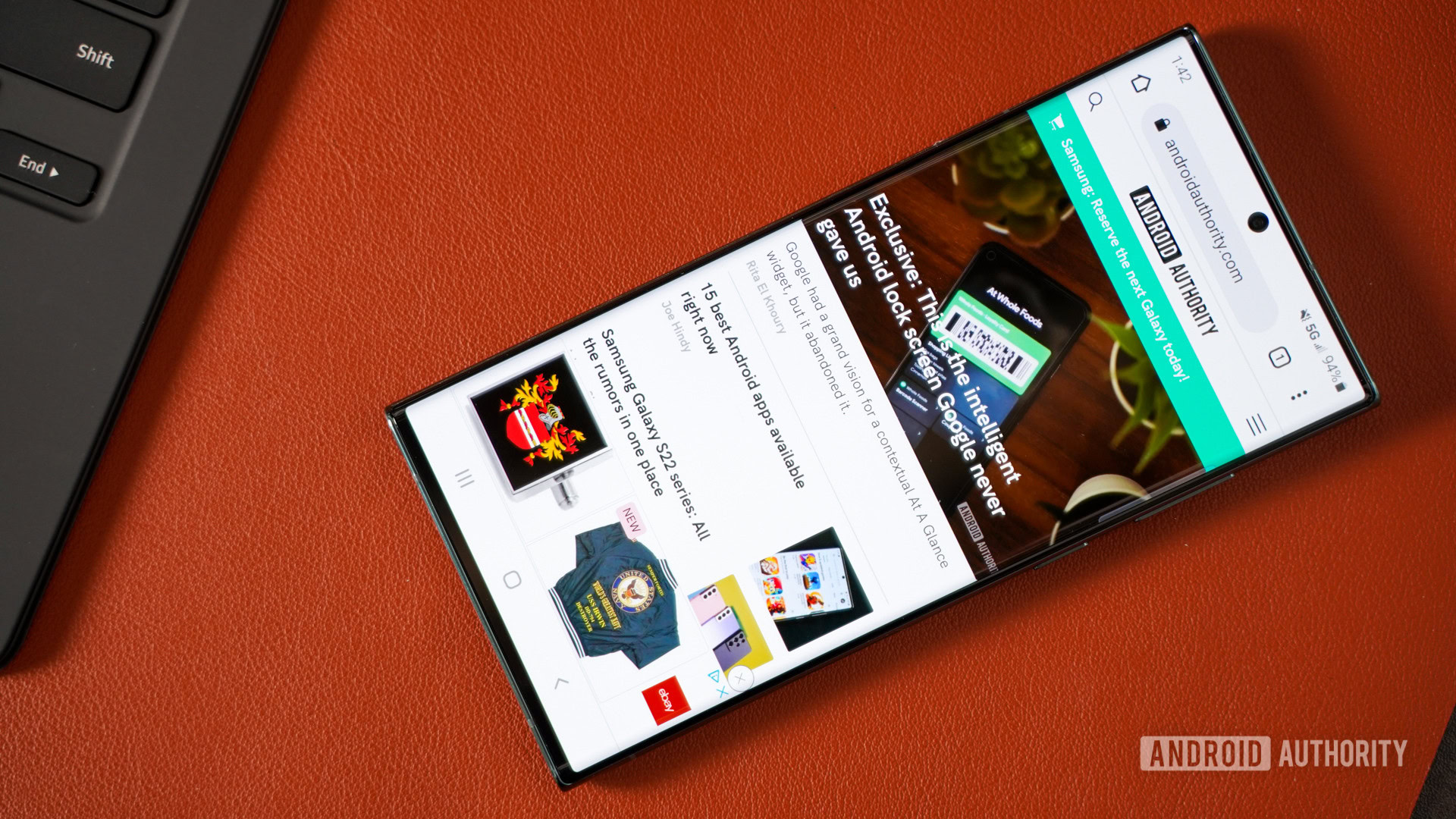
I did a number of side-by-side comparisons and here’s where the screen stands with respect to some competing devices. The Galaxy S22 Ultra’s screen is clearly better than that of the iPhone 13 Pro Max, mostly due to dynamic range and brightness. It makes the iPhone’s screen look somewhat dull in comparison. However, the Galaxy S22 Ultra is about on par with the Pixel 6 Pro and both the Note 20 Ultra and the S21 Ultra. My eyes couldn’t see any real difference between them. The only place the Galaxy S22 Ultra is a definite winner above the pack is in terms of absolute brightness. It’s simply easier to use outdoors under direct sunlight than any other phone I’ve used.
The S22 Ultra's display is dynamite. It's simply easier to see and use outdoors under direct sunlight than any other phone I've tested.
The screen offers a touch sampling rate of up to 240Hz. This is strictly for gaming and is only available when the phone is set to Game Mode. The 240Hz rate isn’t as fast as some of the touch sampling rates of dedicated gaming phones, such as the ASUS ROG Phone 5‘s 300Hz, but it’s more than adequate for intense action games when touch speed matters.
As far as managing the display is concerned, Samsung gives you all the bells and whistles. It includes a blue light filter, the ability to set vivid or natural screen colors, control white balance, manage touch sensitivity, and more. All these tools work well and can have an impact on your viewing experience with the phone.
While it’s not a significant upgrade from Samsung’s more recent flagships as far as the raw experience is concerned, the Galaxy S22 Ultra has a truly great screen — one of the best I’ve ever seen.
Performance: Subtle speed
- Qualcomm Snapdragon 8 Gen 1
- Adreno 730
- 8GB / 12GB RAM
- 128GB / 256GB / 512GB / 1TB non-expandable storage
The Samsung Galaxy S22 Ultra was one of the first phones to ship with the flagship SoC from Qualcomm, the Snapdragon 8 Gen 1. The 8 Gen 1 replaces the Snapdragon 888 in Qualcomm’s lineup, which was widely used in many 2021 flagship phones. The Snapdragon 8 Gen 1, however, is only available in certain regions, including, most notably, North America. European markets, for example, get a version of the S22 Ultra with Samsung’s Exynos 2200 SoC inside. Whichever processor your S22 Ultra ships with, it’ll have either 8GB or 12GB of RAM and between 128GB and 1TB of storage.
Before we dive into the processor, we feel it’s important to note that Samsung cheaped out a bit in the memory department. Both the Galaxy Note 20 Ultra and the Galaxy S21 Ultra included a base RAM figure of 12GB. With the S22 Ultra, the cheapest model now includes just 8GB of RAM. For the price you’re paying, Samsung should have kept the base RAM at 12GB for the Galaxy S22 Ultra. As per our testing, 8GB of RAM will still provide a strong multitasking experience and decent future-proofing, but 12GB is the current sweet spot for premium Android flagships.
Similarly, the S22 Ultra loses the expandable storage of the Note 20 Ultra, which makes the base 128GB of storage feel a little low for power users in 2022. It costs $100 to jump from the 8GB/128GB model to the 12GB/256GB model, with the latter being the one we tested (with a Snapdragon 8 Gen 1). Considering the Galaxy S22 Ultra’s lowest offering is already $100 more than the 128GB iPhone 13 Pro Max, we’d have liked to see the 12GB/256GB version act as the base Galaxy S22 Ultra to balance out the price delta.
How does the Snapdragon 8 Gen 1 perform in the Galaxy S22 Ultra? We weren’t as blown away as we were expecting to be.
In terms of everyday performance, the Galaxy S22 Ultra was absolutely perfect. The daily experience of using the Galaxy S22 Ultra for a wide range of typical smartphone tasks was nothing short of flawless. The processor chewed through simple tasks like scanning email and browsing the web. Running media-rich social networks didn’t tax the phone at all. Streaming YouTube videos or Netflix movies was no problem, nor was multitasking with two apps open on the screen at the same time. Downloading, installing, and running multi-gigabyte games such as Asphalt 9 was a breeze. Gameplay was outstanding, particularly when you take a few moments to set yourself up in Samsung’s Game Launcher to block non-priority notifications.
Benchmarks were a bit of a different story. We ran the usual gamut of benchmarking apps and came away with curious results. The Snapdragon 8 Gen 1 and Galaxy S22 Ultra showed only marginal improvement over the Snapdragon 888-powered Galaxy S21 Ultra in CPU tests, while it often equaled or even fell below the CPU results put up by last year’s Exynos 2100-powered S21 Ultra. The S22 Ultra also fell far behind in CPU performance against Apple’s iPhone 13 series with the A15 Bionic chipset. The 8 Gen 1 did show some serious gains in GPU-focused tests, however, where it handily bested the S21 Ultra. If there’s one phone the S22 Ultra absolutely trounced in benchmarks across the board, it is Google’s Tensor-powered Pixel 6 Pro.
As far as the Exynos 2200 version goes, we extensively tested it compared with the Snapdragon 8 Gen 1 variant and found that it doesn’t offer close to the same GPU boost and has some issues with sustained performance. Check out our in-depth comparison for all the data and our deeper analysis.
Of course, benchmarks are only an indicator of real-world performance, and based on our testing, even the most power-hungry users will be more than satisfied with the Gen 1 variant, and even the Exynos model. However, we do have to address the elephant in the room: the Game Optimization Service (GOS) controversy. While there are viable reasons to throttle demanding apps and games, users should be informed when this is taking place and have the option to disable it. Thankfully, Samsung has righted this wrong with an update that adds an Alternate Game Performance Management Mode in Game Booster that ignores all throttling should you wish.
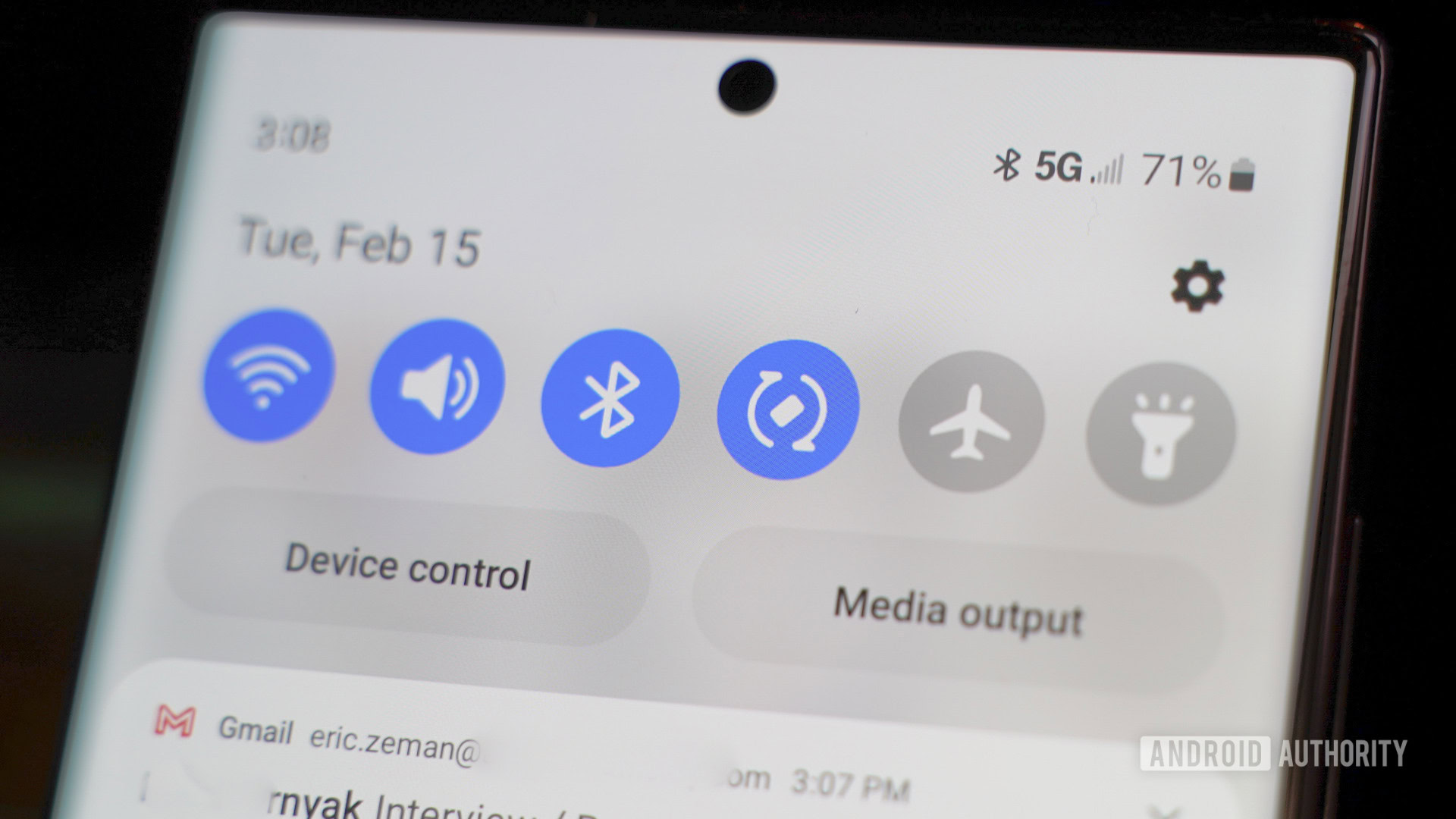
On the wireless side of things, the Galaxy S22 Ultra excels in a big way. Its connectivity package is one of the best available from a modern smartphone, meaning it can handle just about any network you encounter.
First up, 5G. The phone supports both mmWave and sub-6GHz 5G. While the former is mostly used in the US, the latter is more widely deployed around the world. Samsung lent us an unlocked model with a T-Mobile SIM card inside (it also supports eSIM for dual-SIM purposes), and I had no signal or download/upload speed problems during my testing where I live in NJ as well as around New York City. The North American version of the phone also supports the 5G networks of AT&T and Verizon.
As for Wi-Fi and Bluetooth, Samsung went with the top specs you’ll find in any phone — Wi-Fi 6E and Bluetooth 5.2. This future-proofs the phone for several years at least. Last, the phone includes support for ultra-wideband, which helps the phone do things such as act as a car key or track Samsung SmartTags plus Bluetooth trackers.
Altogether, the Galaxy S22 Ultra is fully equipped to connect with the networks and devices of today and tomorrow.
Battery: Good enough
- 5,000mAh
- 45W wired charging
- 15W wireless charging
- Wireless Power Share
Batteries with a capacity of 5,000mAh are pretty much the norm for flagship smartphones at this price. The Galaxy S22 Ultra improves upon the 4,500mAh battery that was in the Note 20 Ultra, though it equals the 5,000mAh of the Galaxy S21 Ultra. It’s a good starting point.
There are a lot of factors that play a role in determining battery life, including screen brightness, resolution and refresh rate, CPU/GPU output, background tasks, and so on. The Galaxy S22 Ultra ships with the phone set to the FHD+ resolution with the adaptive 120Hz refresh rate enabled and with the processor speed control set to “optimized” rather than “high” or “maximum,” so that’s how we tested it. Adjusting any of these could increase or decrease battery life accordingly.
The Galaxy S22 Ultra's battery life is in the ballpark for an Android flagship phone, but falls behind the gains we've seen made by Apple.
With the out-of-the-box settings, the Galaxy S22 Ultra pushed through a full day quite easily and had some room to spare. Typically, the phone closed the day with 25% to 35% still left in the tank, depending on how I used it throughout the day. On days when I really pushed it hard, the battery was closer to the 20% mark. That included about 6.5 hours of screen-on time. While that is in the ballpark for an Android flagship phone, it’s well behind the gains we’ve seen made by Apple, and specifically with this phone’s immediate rival, the iPhone 13 Pro Max.
The phone charges at a maximum power of 45W with a USB Power Delivery PPS-spec’d wired charger, though there’s no charger in the box. We tested the phone with both 30W and 45W chargers. With the 30W charger, it typically took about 100 minutes to top up the phone from 20%. That’s definitely far from great. Using a 45W charger saw much quicker charging times. The faster charger netted a full charge from 25% in less than 50 minutes. Clearly, the 45W option is the way to go since you have to buy it anyway. To fast charge the Galaxy S22 Ultra at maximum speeds you will need a charger that is compatible with the USB Power Delivery Programmable Power Supply (USB PD PPS) protocol. You can read all about USB PD PPS here, or check out our guide for the best Samsung Galaxy S22 chargers.
On the wireless charging front, all three Galaxy S22 phones are limited to speeds of 15W. We tested the S22 Ultra on a Qi wireless pad that outputs 18W. Our results showed fairly slow charging given how large the battery is. More often than not it took just under two hours to reach a full charge on the wireless charger. It also supports reverse wireless charging at just 4.5W. I tested it on a pair of Samsung Galaxy Buds and it took quite a while to top them off. A few phones are pushing speeds to 10W, but ~5W is still usable for earbuds and the like.
The Samsung Galaxy S22 Ultra delivers battery life and charging that’s on par with much of the Android competition, but it’s far from the very best as far as daily performance goes.
Camera: A small step forward
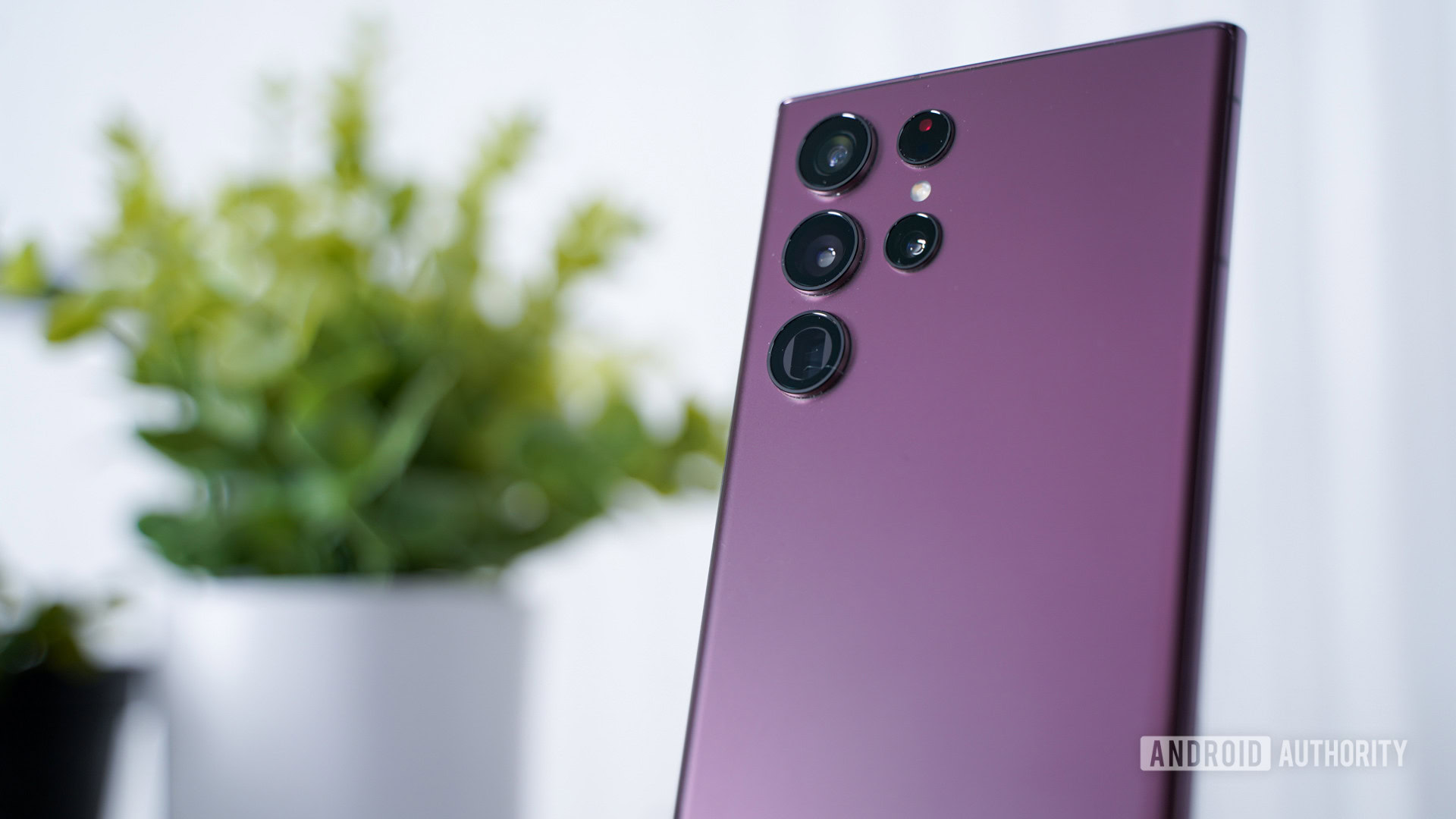
- 108MP, PDAF, OIS ( f/1.8, 0.8μm)
- 12MP ultrawide, PDAF (f/2.2, 1.4μm, 120-degree FoV)
- 10MP telephoto, 3x optical zoom, OIS (f/2.4, 1.12μm)
- 10MP telephoto periscope, 10x optical zoom, OIS (f/4.9, 1,12μm)
- 40MP front camera, (f/2.2, 0.7µm)
- 4K video up to 60fps, 8K up to 24fps
Samsung has always pushed the envelope with its smartphone cameras, particularly on the Note and Galaxy S series devices. Each year it ups the ante by adding another lens or a shooting mode or by making the lenses faster or upgrading the underlying sensors. What’s in store this year?
The lens arrangement is a direct carry-over from the Galaxy S21 Ultra, as are the megapixels behind each lens. That means a 108MP main (pixel-binned down by a factor of nine to 12MP), a 12MP ultrawide, a 10MP 3x optical telephoto, and a 10MP 10x optical telephoto. The same is also true of the 40MP selfie camera on the front, as well as the rear (8K) and front (4K) video capture resolutions.
The camera hardware may be a repeat of the powerful S21 Ultra, but the S22 Ultra has an ace up its sleeve in the processor. The Qualcomm Snapdragon 8 Gen 1 has an upgraded image signal processor, which allows Samsung to do more with the raw photographic details. This impacts features such as the new Night Mode, which Samsung laughingly refers to as “Nightography.” The company says it is able to use AI to help draw in more light and help color pop. Let’s see how that plays out in the results.
In the basic daytime shots above, all taken with the main camera at the most basic setting, you can see sharp focus, clean exposures, decent HDR (when warranted), and slightly pushed color. The coffee truck, for example, was nowhere near that cheery-looking in real life — the Galaxy S22 Ultra’s processing amped it up a bit. The chicken wrap looks a little lackluster, but there’s plenty of detail buried in the NYC cityscapes.
The S22 Ultra includes a 3x optical zoom telephoto lens. The photos above were all captured with that lens. The results are strikingly similar to those of the main lens, despite the huge difference in pixel size and aperture. There’s plenty to like with pleasing exposure, rich detail, and solid color reproduction.
Moving up the lens ladder, you can see how the 10x optical zoom camera gets things done (above). As before, the exposures and color are on point and there’s a solid amount of detail in each shot. Things are a bit less sharp, however, and you’ll notice a bit more grain. Importantly, the aperture is way slower on this lens, so it isn’t the best option for shooting zoomed shots at night.
Moving in the opposite direction, the ultrawide lens on the Galaxy S22 Ultra takes 12MP shots at 0.6x. That Samsung is able to keep exposure and color so consistent across the lenses is a bit of a wonder. You’ll definitely see some darker regions in these shots where the HDR wasn’t quite able to draw out the detail. Moreover, there’s a bit of distortion in the corners of each image. On the whole, however, I like the added perspective of the ultrawide camera.
Finally, we have the entire focal range of the Samsung Galaxy S22 Ultra. Here we go from 0.6x ultrawide to 100x Space Zoom (Samsung’s fancy marketing for digital cropping). The 10x zoom photo is still decent, but the 30x and 100x Space Zoom images are pretty much worthless — despite the fact that I made sure to steady my shots before taking them. Having this much focal range on a smartphone is, however, rather nuts.
The portrait mode is pretty good on the Galaxy S22 Ultra. In the series above we have a regular photo followed by a 1x portrait and a 3x portrait. The difference between the two portraits is pretty obvious. You can see that there’s less bokeh in the 1x portrait, but there’s more dynamic range. The 3x portrait totally blew out the sky in the background and had such a narrow field of focus that some of Washington’s face is out of focus. Portrait mode also now works with pets, meaning you’ll get more detail on your furry friends’ hair.
The selfie and self-portrait features of the S22 Ultra are solid for this class of phone. I’m properly exposed in the above photos, despite the direct sunlight that was hitting my face in the left pair. The background of each photo is fine in terms of detail and range, but the self-portraits are a bit too aggressive with the background blur. Further, you can see that the top of my hair isn’t quite in focus, meaning Samsung hasn’t perfected edge detection yet. The nighttime selfies, however, lose sharpness, particularly in my face.
Shooting at night was hit or miss. The biggest and most obvious detractor from the images above is the nasty lens flare coming from the light sources. The smears of light are unappealing, which is odd because Samsung has made a big deal of how it outfitted the main and ultrawide camera lenses with specially coated glass to reduce flare in nighttime shots. The best two exposures are the ones with the trash and the shot of Cafe Wha. For the trash photo, it was really dark and I needed to use the Night Mode, which is available in the shooting mode picker. The Cafe Wha photo is nice because it accurately captured the color of the scene without blowing any of the shades out. I also put together a series using the different lenses so you can get an idea of what each is capable of at night. I wish these showed more detail of the sky in the background, but even the 10x photo is rather sharp.
The Samsung Galaxy S22 Ultra is an excellent video machine, too. It doesn’t have quite the image-stabilizing magic of the iPhone 13 Pro series, but it does really well at keeping things smooth and clean when you’re moving while shooting. There is a new feature called Auto Framing that automatically keeps people in the frame when you’re moving the phone about. Most importantly, it can keep all the faces in focus at once when you’re recording. You do have to turn this feature on before recording video in order to take advantage of it, though.
The Galaxy S22 Ultra has a winning camera setup with an excellent videography suite.
While it’s nice that the phone shoots at resolutions up to 8K, you’ll be best served keeping the settings at 4K/60fps for most of your recording. This setting produces the most balanced results. Sound quality from the recordings was particularly impressive, with plenty of range. You’ve also got options for recording at slow and really slow speeds, as well as hyperlapse for speeding things up. These are all available in the additional shooting modes within the camera app.
The front-facing selfie camera records 4K/60fps video of its own and it does a good job. It’s a little rough when the light goes down, but the results are better than most other phones I’ve tested. This means your late-night videos might actually be usable.
Speaking of late-night video, the S22 Ultra’s Nightography power applies to shooting video in the dark. The larger pixels of the main camera are able to capture more light and thus deliver cleaner, brighter night-time videos. I shot several scenes in the dark and the results definitely turned out better than just about any other phone I’ve used.
As per the norm, Samsung’s camera application is a powerful tool to aid your photography. You’ve got a bevy of settings at your fingertips along the left of the viewfinder that allow you to make quick adjustments or reach into the settings for tweaking on a deeper level. The mode picker is straight forward and there are plenty from which to choose. There are also some special editing features to be aware of. If you use the Samsung Gallery app you’ll be able to take advantage of a magic eraser tool for getting rid of annoying objects in your photos including glare and shadows. Moreover, an on-board tool in the Samsung Gallery app called “suggestions” can be put to use to “re-master” photos. This function automatically adjusts brightness and reduces noise to clean up your photos.
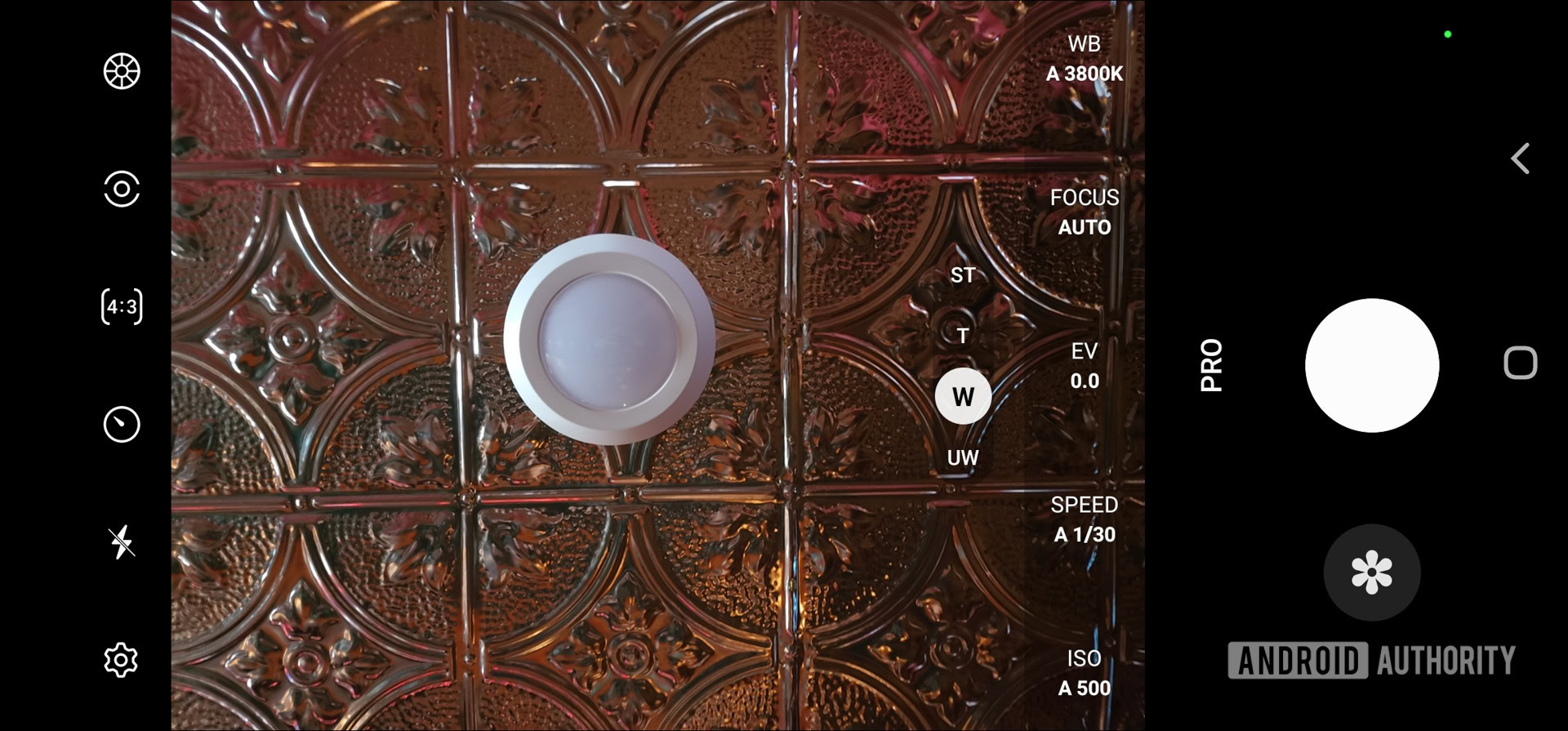
How does the Galaxy S22 Ultra’s camera compare to other leading phones? It depends a bit on your preferences. I took a few snaps against the Google Pixel 6 Pro and the Apple iPhone 13 Pro Max, which are likely the closest direct competitors in terms of photography. Across the range of comparison photos I took, sometimes the Galaxy S22 Ultra snapped the better shot, and sometimes the Pixel 6 Pro or the iPhone 13 Pro Max did. I think color accuracy was best on the Pixel 6 Pro, while the Galaxy S22 Ultra made colors the most fun, and the iPhone 13 Pro Max tended to make things over-warm.
Since originally publishing our review we have extensively tested the Galaxy S22 Ultra against other top phones. Be sure to check out our mega shootout for all the samples and analysis, but the biggest takeaway is that, at this moment in time, the Galaxy S22 Ultra has a winning camera setup. It’ll also likely lead the pack in terms of photography for the year unless one of Samsung’s competitors is able to make a big leap in imaging. That remains to be seen.
You can check out the full-resolution camera samples in this Google Drive folder.
Software: Winning at Android
- Android 12, update to Android 13 available
- One UI 4.1, update to One UI 5 available
- Four years of OS updates, five years of security updates
Samsung dropped a bomb on Google when it announced the Galaxy S22 series. The company publicly committed to providing four years of Android OS updates and five years of security updates for the Galaxy S22 Ultra, its direct kin, and some previous generation Galaxy phones. That’s better than Google’s commitment to the Pixel line, which is three years for OS upgrades and four years for security updates. That’s a strong start for the Galaxy S22 Ultra, leaving Google — and every other Android phone maker — left to catch up as it looks to gain ground on Apple’s lead for long-term support.
The phone ships with Android 12 and Samsung’s One UI 4.1. However, Samsung has risen to the top of the market when it comes to quick updates. It took just over a month after Google officially announced Android 13 for the software to make its way to the Galaxy S22 Ultra. It brings the most recent One UI 5 skin as well, complete with a few new features.
The S22 Ultra started on very good footing as Android 12 and One UI 4 were chock full of good stuff. There was some system bloat, however. The phone comes packed with apps from Samsung, as well as Microsoft due to a long-standing arrangement between the two companies. Some of these apps can be deleted and some cannot. Moreover, the sheer multitude of menu and sub-menus items to wade through can be a bit overwhelming when it comes time to tweak the phone and make it your own. On the bright side, software updates have pared back a few of the in-app ads that we ran into for the first few months. For example, we received a sales pitch for the Galaxy S22 directly in the notification shade while we were reviewing the phone. We haven’t seen nearly as many intrusions recently, which is what you should expect for a phone that costs over $1,000.
Everything that truly sets the Galaxy S22 Ultra’s software experience apart from the Galaxy S22 Plus, Galaxy S22, and competing devices such as the Pixel and iPhone is related to the S Pen. What does the S Pen do? All the things it did before on the last Galaxy Note.
Pull the S Pen out and the Galaxy S22 Ultra automatically launches the Notes app by default for basic note-taking and scribbling this or that, though you can change this if you wish. You can also control the pen tip style, thickness, color, and other attributes of the scribbles you make. If you’ve got the screen unlocked before you retrieve the S Pen, you can use the Air Command tool (hover the stylus over the screen or press the stylus button) to call up the full list of S Pen tools, which include Create Note, View All Notes, Smart Select, Screen Write, Live Messages, AR Doodler, Translate, and Pen Up. None of these features are new, though the translate tool has been upgraded to be faster and support up to 88 languages.
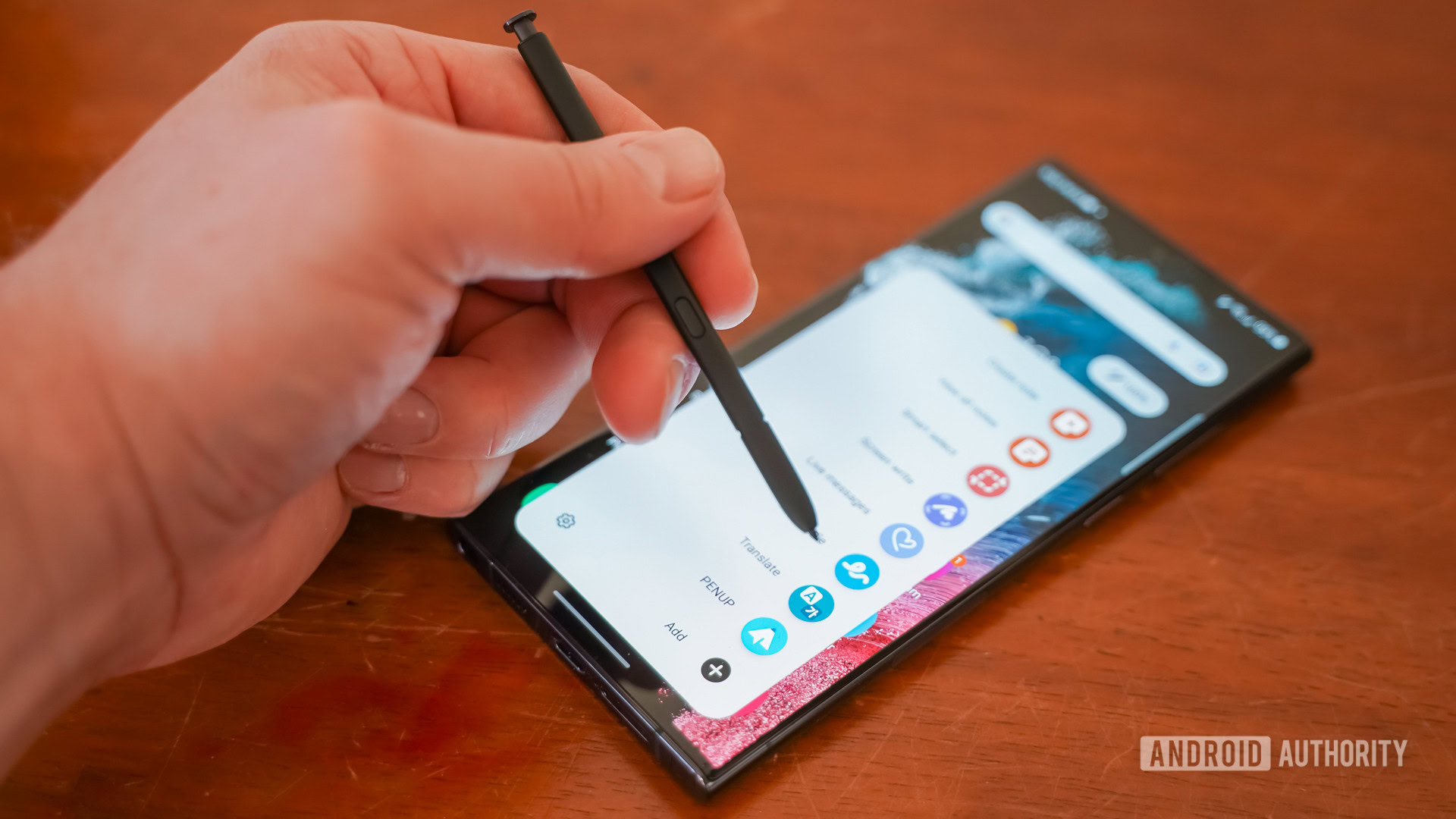
The action of the S Pen itself on the display feels improved over previous iterations. Like before, it supports more than 4,000 levels of pressure, but Samsung reduced the response time to 2.3ms. This really helps with the real-pen feel, as the delay between touching the display and actually seeing a result on screen has basically been eliminated. It’s outstanding, and easily the best stylus experience you’ll get from a smartphone.
The S22 Ultra's S Pen produces the best stylus experience you’ll get from a smartphone.
Other core Galaxy S22 Ultra features include split-screen multitasking. While this feature has promulgated across many Android flagships, it started with the Note series and is still best on the big-screened Samsung. It’s just too easy to create app pairs that automatically open in split-screen mode. It’s something I’ve appreciated about Samsung’s software for many years now.
Beyond multitasking, the Galaxy S22 Ultra’s critical productivity tools are still Samsung’s DeX feature and the phone’s ability to link with Windows PCs.
With DeX, you can cast a desktop-like environment to a monitor or PC of your choice. When in DeX mode, the Galaxy S22 Ultra itself can act like a trackpad, allowing you to navigate the on-screen user interface. It reminds me a bit of Chrome OS, but instead gives you access to everything that’s on your phone. The DeX desktop is available natively on Samsung’s Tab S Android tablets.
The connection to Windows PCs is a little bit simpler. In strictest terms, Link to Windows allows your Galaxy S22 Ultra’s desktop to appear as a window on your Windows 10 or Windows 11 computer, providing you access to your notifications, photos, phone app, messages, and select Android apps. They all function as you’d expect them to, albeit within the confines of a phone-shaped window.
Both DeX and Link to Windows take some futzing to get working properly and I can’t say they are any better or more usable than having a regular laptop or tablet available instead. Still, they are options that many other phones don’t include.
The Samsung Galaxy S22 Ultra includes some of the most advanced, productivity-minded software available from a smartphone. If you’re looking to minimize the amount of gear you carry and rely on your phone to do most things, the S22 Ultra is the one to do it.
Samsung Galaxy S22 Ultra specs
| Galaxy S22 | Galaxy S22 Plus | Galaxy S23 | Galaxy S23 Plus | |
|---|---|---|---|---|
Display | Galaxy S22 6.1-inch Dynamic AMOLED Flat display 19.5:9 aspect ratio FHD+ resolution (2,340 x 1,080) 120Hz adaptive refresh rate (48Hz to 120Hz) 240Hz touch sampling rate | Galaxy S22 Plus 6.6-inch Dynamic AMOLED Flat display 19.5:9 aspect ratio FHD+ resolution (2,340 x 1,080) 120Hz adaptive refresh rate (48Hz to 120Hz) 240Hz touch sampling rate | Galaxy S23 6.1-inch Dynamic AMOLED Flat display 19.5:9 aspect ratio FHD+ resolution (2,340 x 1,080) 120Hz adaptive refresh rate | Galaxy S23 Plus 6.6-inch Dynamic AMOLED Flat display 19.5:9 aspect ratio FHD+ resolution (2,340 x 1,080) 120Hz adaptive refresh rate |
Processor | Galaxy S22 US: Snapdragon 8 Gen 1 Global: Exynos 2200 | Galaxy S22 Plus US: Snapdragon 8 Gen 1 Global: Exynos 2200 | Galaxy S23 Snapdragon 8 Gen 2 | Galaxy S23 Plus Snapdragon 8 Gen 2 |
RAM | Galaxy S22 8GB | Galaxy S22 Plus 8GB | Galaxy S23 8GB | Galaxy S23 Plus 8GB |
Storage | Galaxy S22 128GB or 256GB No microSD card support | Galaxy S22 Plus 128GB or 256GB No microSD card support | Galaxy S23 128GB or 256GB No microSD card support | Galaxy S23 Plus 256GB or 512GB No microSD card support |
Power | Galaxy S22 3,700mAh battery 25W wired charging 15W wireless charging No charger in box | Galaxy S22 Plus 4,500mAh battery 45W wired charging 15W wireless charging No charger in box | Galaxy S23 3,900mAh battery 25W wired charging 15W wireless charging No charger in box | Galaxy S23 Plus 4,700mAh battery 45W wired charging 15W wireless charging No charger in box |
Cameras | Galaxy S22 REAR: - 50MP wide (1.0μm, ƒ1.8, 23mm, 85-degree FoV) - 12MP ultrawide (1.4μm, ƒ2.2, 13mm, 120-degree FoV) - 10MP telephoto (1.0μm, ƒ2.4, 69mm, 36-degree FoV, 3x optical zoom) FRONT: - 10MP wide (ƒ2.2, 23mm, 80-degree FoV) | Galaxy S22 Plus REAR: - 50MP wide (1.0μm, ƒ1.8, 23mm, 85-degree FoV) - 12MP ultrawide (1.4μm, ƒ2.2, 13mm, 120-degree FoV) - 10MP telephoto (1.0μm, ƒ2.4, 69mm, 36-degree FoV, 3x optical zoom) FRONT: - 10MP wide (ƒ2.2, 23mm, 80-degree FoV) | Galaxy S23 REAR: - 50MP wide - 12MP ultrawide - 10MP telephoto FRONT: - 12MP wide | Galaxy S23 Plus REAR: - 50MP wide - 12MP ultrawide - 10MP telephoto FRONT: - 12MP wide |
Software | Galaxy S22 Android 12 One UI 4.1 | Galaxy S22 Plus Android 12 One UI 4.1 | Galaxy S23 Android 13 One UI 5.1 | Galaxy S23 Plus Android 13 One UI 5.1 |
Materials | Galaxy S22 Gorilla Glass Victus Plus front and back Armour Aluminum frame | Galaxy S22 Plus Gorilla Glass Victus Plus front and back Armour Aluminum frame | Galaxy S23 Gorilla Glass Victus 2 Armour Aluminum | Galaxy S23 Plus Gorilla Glass Victus 2 Armour Aluminum |
Durability | Galaxy S22 IP68 certified | Galaxy S22 Plus IP68 certified | Galaxy S23 IP68 certified | Galaxy S23 Plus IP68 certified |
Dimensions and weight | Galaxy S22 146 x 70.6 x 7.6mm 168g | Galaxy S22 Plus 157.4 x 75.8 x 7.6mm 196g | Galaxy S23 146.3 x 70.8 x 7.6mm, 168g | Galaxy S23 Plus 157.7 x 76.2 x 7.6mm, 196g |
Colors | Galaxy S22 Phantom Black, Phantom White, Green, Pink Gold Online exclusives: Cream, Graphite, Sky Blue, Violet | Galaxy S22 Plus Phantom Black, Phantom White, Green, Pink Gold Online exclusives: Cream, Graphite, Sky Blue, Violet | Galaxy S23 Phantom Black Cream Lavender Green | Galaxy S23 Plus Phantom Black Cream Lavender Green |
Value and competition
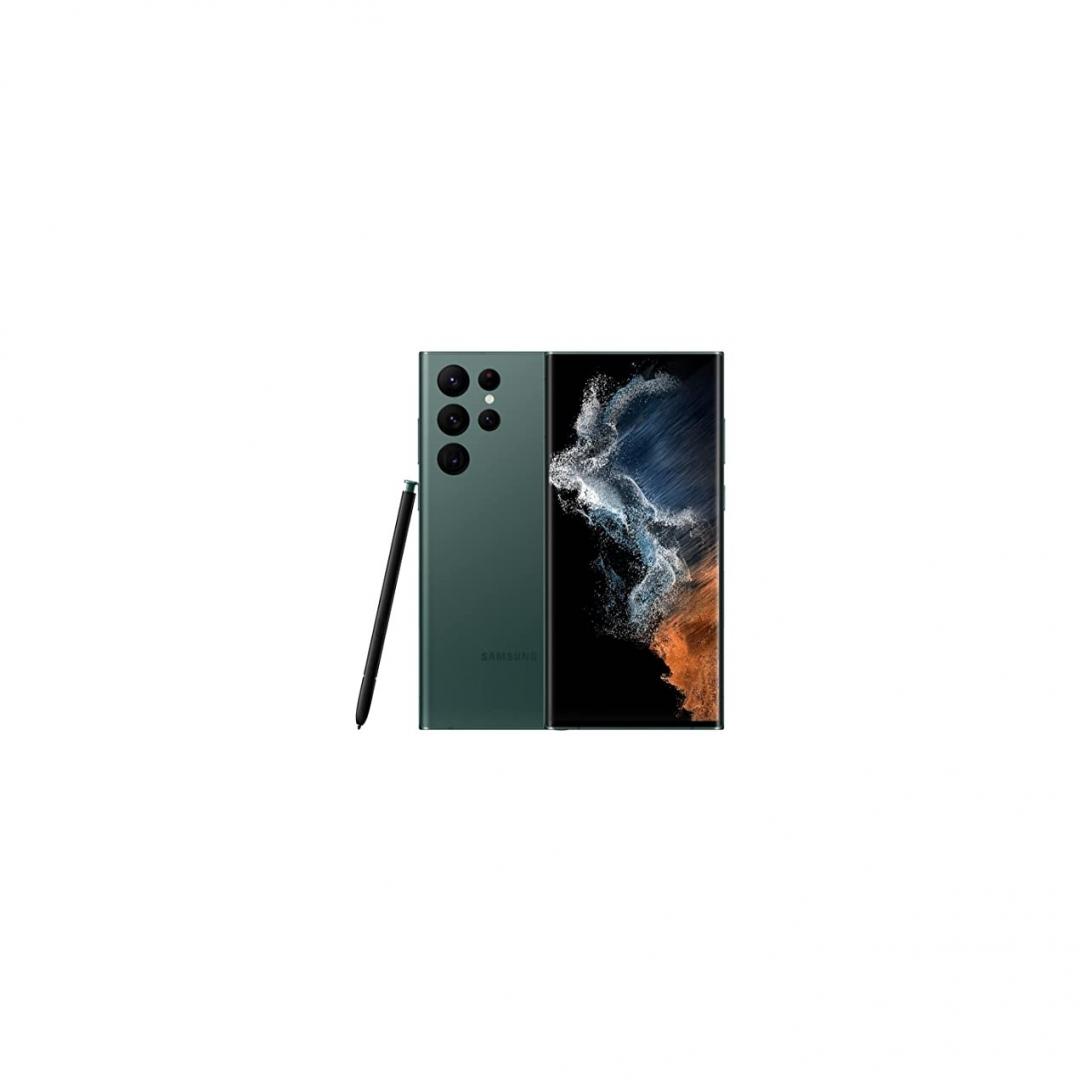

The Galaxy S22 Ultra is a bit of a “greatest hits” compilation of Samsung’s best ideas from former devices. It has the core hardware of the Note 20 Ultra with the battery and camera module of the S21 Ultra. The Galaxy S22 Ultra was one of the first phones to boast the Snapdragon 8 Gen 1 processor, and as long as you don’t mind paying a bit extra, there are generous storage combinations that mostly make up for the missing microSD support.
Moreover, it packs much of the same productivity-enabling software as previous Note devices coupled with the power of the S Pen while keeping the total package reasonable in terms of cost. At $1,199, the S22 Ultra is also $100 cheaper than the Note 20 Ultra was when it first launched and is the same price Samsung was once asking for the Galaxy S21 Ultra.
Given the total package here, the S22 Ultra’s full price tag is justified. It’s a hardcore device that nearly has it all. But now that the Galaxy S23 series (and especially the S23 Ultra) is widely available, you can find the S22 Ultra at a reduced price more often than not.
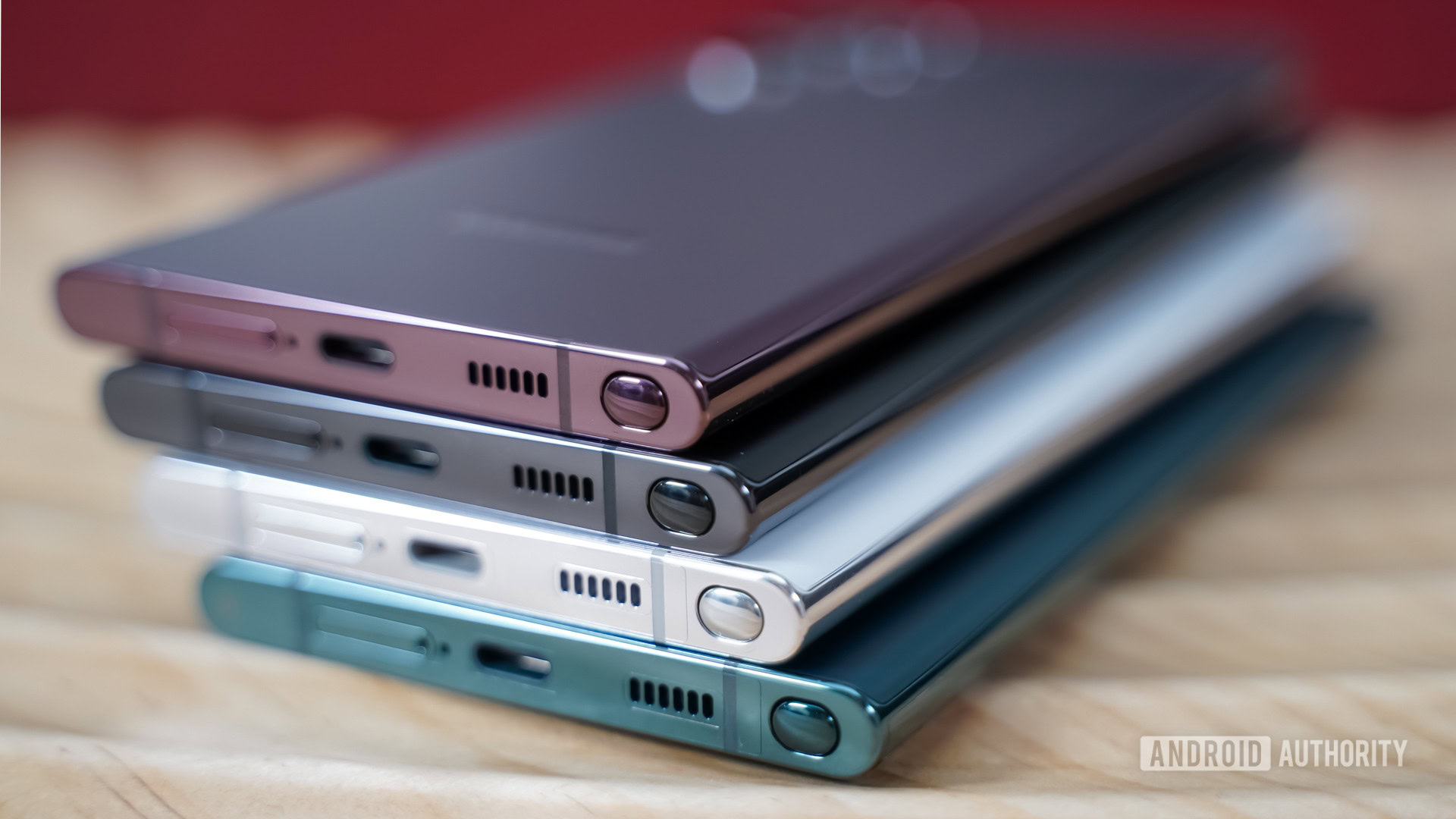
On paper, the Galaxy S23 Ultra ($1199.99 at Samsung) is the closest competitor to the Galaxy S22 Ultra. The newer model may look the same and cost the same as last year’s flavor at launch, but it brings a new 108MP primary camera, Snapdragon 8 Gen 2 SoC, and a tougher Gorilla Glass Victus 2 face to its kit. These upgrades are well worth fishing for if you want to own Samsung’s new pound-for-pound best device.
What if you’re not looking for a stylus and want to save some green but stick with Samsung? Your next best bet is going to be the Galaxy S23 Ultra’s stablemates, the Galaxy S23 Plus ($999.99 at Samsung) and the Galaxy S23 ($799 at Amazon). Each makes some concessions to earn those lower price points, but for many, the trade-offs may be worth it. For example, both Galaxy S23 models have smaller screens (6.6 and 6.1 inches, respectively) and feature the more rounded profile traditional to the S series. This makes both phones easier to handle day in and day out. The Galaxy S23 and S23 Plus also include the same processor as the Ultra, though RAM and storage options are more limited. They also have solid cameras that may not include as many megapixels as the S22 Ultra, but still have many of the same software features. Perhaps most importantly, they are both party to the same trade-in deals and long-term software support as the Ultra.
If you're in the market for a stylus-equipped phone, getting down with Samsung's S22 Ultra pre-launch trades is the way to go.
The Galaxy S22 Plus ($414.78 at Amazon) and Galaxy S22 ($650 at Amazon) are also still well worth considering if you want to shave more dollars from your credit card bill. Despite being last generation’s hotness, they remain swift in operation, great camera phones, and subject to many more years of support under Samsung’s wing. Additionally, you can often find them for much cheaper now that the S23 line is around.
Not in the mood for a traditional smartphone? Looking for something a little more forward-thinking and fun? Samsung’s flexible Galaxy Z Fold 4 ($1180.25 at Amazon) and Galaxy Z Flip 4 ($944.45 at Amazon) are classy options that offer a little of both. The former is the larger of the two and supports the S Pen stylus (though there’s nowhere to stow it unless you buy an expensive case). It packs one of the largest screens available on a phone and delivers many of the Galaxy S22 Ultra’s best productivity features. The latter is a smaller device more akin to the flip phones of old with the power of a modern device. The biggest concession you’ll make with either of these phones is battery life and camera quality, which lag behind that of similarly priced flagships.
If money is no object, there’s always Sony. Primarily, there’s the Xperia 1 V ($1398 at Amazon), which gets you a svelte device with leading specs and performance and a keen focus on creating and gaming. Sony’s new textured glass and side rails make the Xperia 1 V one of the easiest flagships to hold onto, too.
Perhaps your passion is photography. In that case, one of your best bets is the Google Pixel 7 Pro ($589.98 at Amazon). Google’s flagship may not have the processing chops of the Galaxy S22 Ultra or quite the high-end appeal, but the Tensor G2 continues to find new software wrinkles to make life easier, and it still comes with a solid software update commitment from Google (albeit not as good as Samsung’s). Plus, crucially, it’s $300 cheaper.
OnePlus fans should also take a look at the OnePlus 11 ($1296 at Amazon). It’s cheaper than the S22 Ultra, sports faster 80W charging, and is powered by the Snapdragon 8 Gen 2 chipset, meaning it should handle just about any task with ease. However, the phone lags behind Samsung in the camera department and skips wireless charging altogether.
If nothing else in the Android family appeals to you, you can always take a bite out of Apple. The iPhone 14 Pro Max ($999 at Amazon) offers an excellent experience in terms of battery life, performance, and camera quality. It benefits from the biggest camera update in years, a 48MP primary lens, and a new Dynamic Island for flexible notification management.
Samsung Galaxy S22 Ultra review: The verdict

Samsung has no doubt put together a powerful pocket machine in the Galaxy S22 Ultra. This phone ticks off most of the boxes when it comes to specs, such as the latest processor, the highest megapixel camera, and of course the built-in S Pen and all its functionality.
Further, the phone packs just about the best software suite this side of the Googleplex and the best support guarantee of any Android phone. The only real bummers are the average battery life and the reduced RAM on the base model.
The Samsung Galaxy S22 Ultra lacks soul, but is a technical marvel that's close to flawless as a premium Android phone.
There’s one thing the Samsung Galaxy S22 Ultra lacks, however, and it’s a big one: soul. Samsung clearly took the best facets of its Note 20 Ultra and S21 Ultra and squeezed them together until the Galaxy S22 Ultra came out. The S22 Ultra recycles design elements, spec elements, and even much of its S Pen feature set and yet calls itself a brand new phone.
While that may be some harsh criticism, it doesn’t take away from the technical marvel that is the Galaxy S22 Ultra. It’s a lot of phone; more than most people need. The few shortcomings the Galaxy S22 Ultra suffers are far outbalanced by the complete premium experience it delivers along the way.
Samsung Galaxy S22 Ultra top questions and answers
While you can risk using any phone without a case, we’d always recommend grabbing a case for an expensive phone like the Galaxy S22 Ultra. Check out our case buyer’s guide for some tips on what to look for.
No, the Galaxy S22 Ultra does not have an SD card slot, which means you have to think carefully about which storage variant to get (the most you can get is 1TB).
Yes, the phone is IP68 rated, meaning it will survive in up to 1.5m of water for up to 30 minutes.
The S22 Ultra has a larger screen with a higher resolution, better cameras, and a larger battery. It can also be had with more RAM and storage — see a detailed specification comparison here.
There are seven colors to choose from: Phantom Black, Phantom White, Green, Burgundy, Graphite, Sky Blue, and Red. However, the last three are online exclusives.
Yes. Unlike the Galaxy S22 and S22 Plus, the S22 Ultra has a display that’s slightly curved on the sides.
Unfortunately, you don’t get a charger included with your Galaxy S22 Ultra purchase.
Yes, the Galaxy S22 Ultra supports both sub-6GHz and mmWave 5G technology in most regions.
